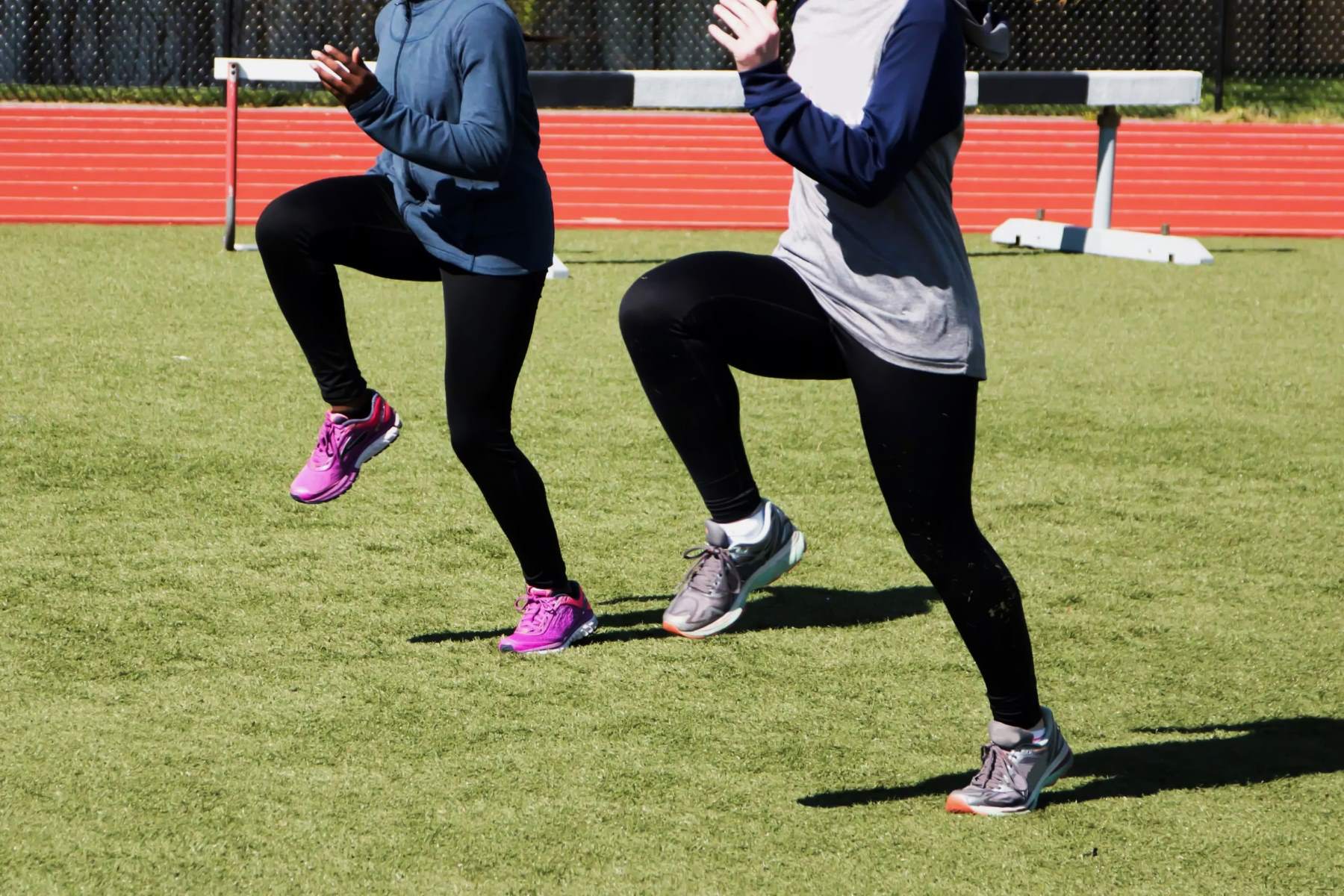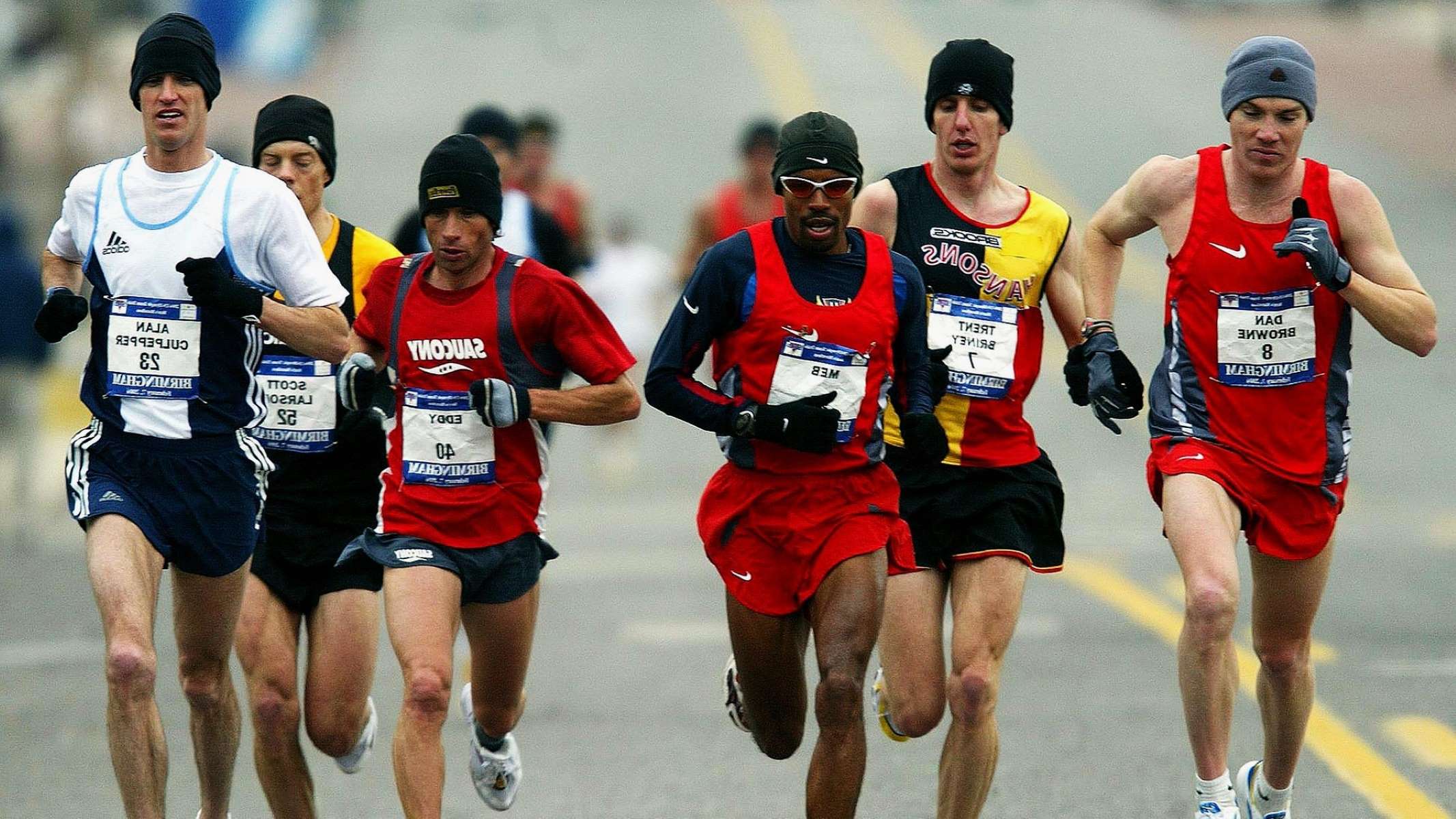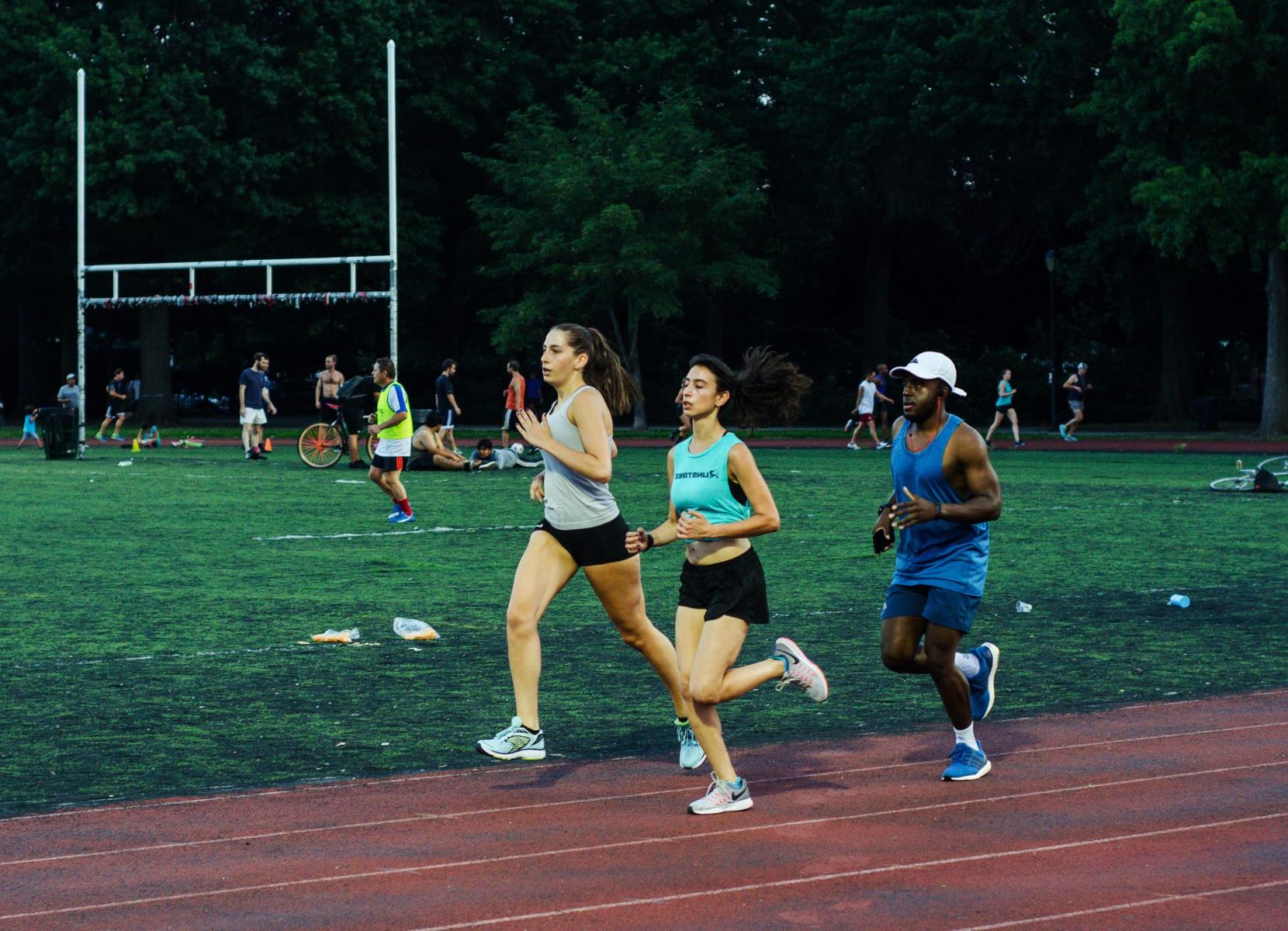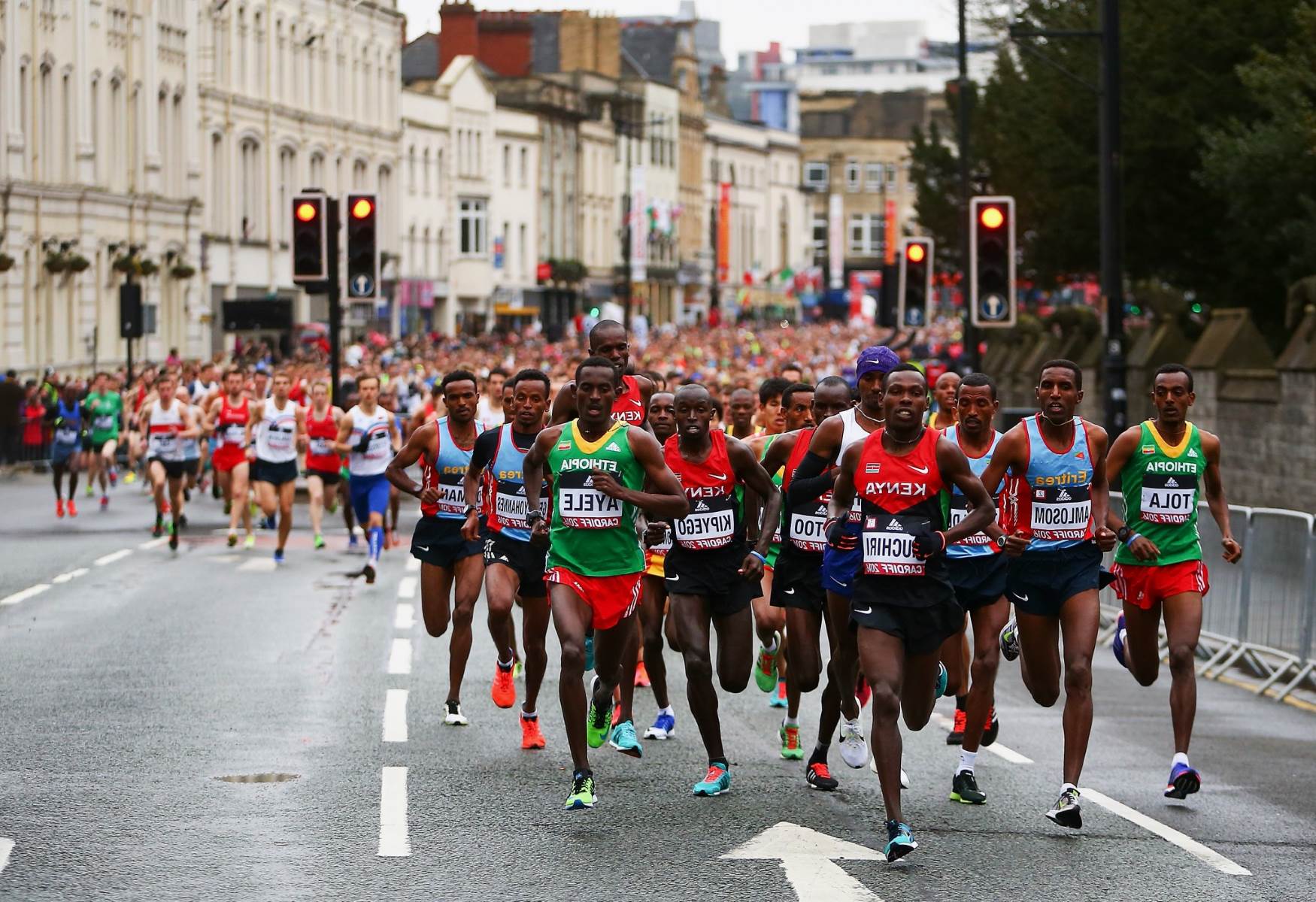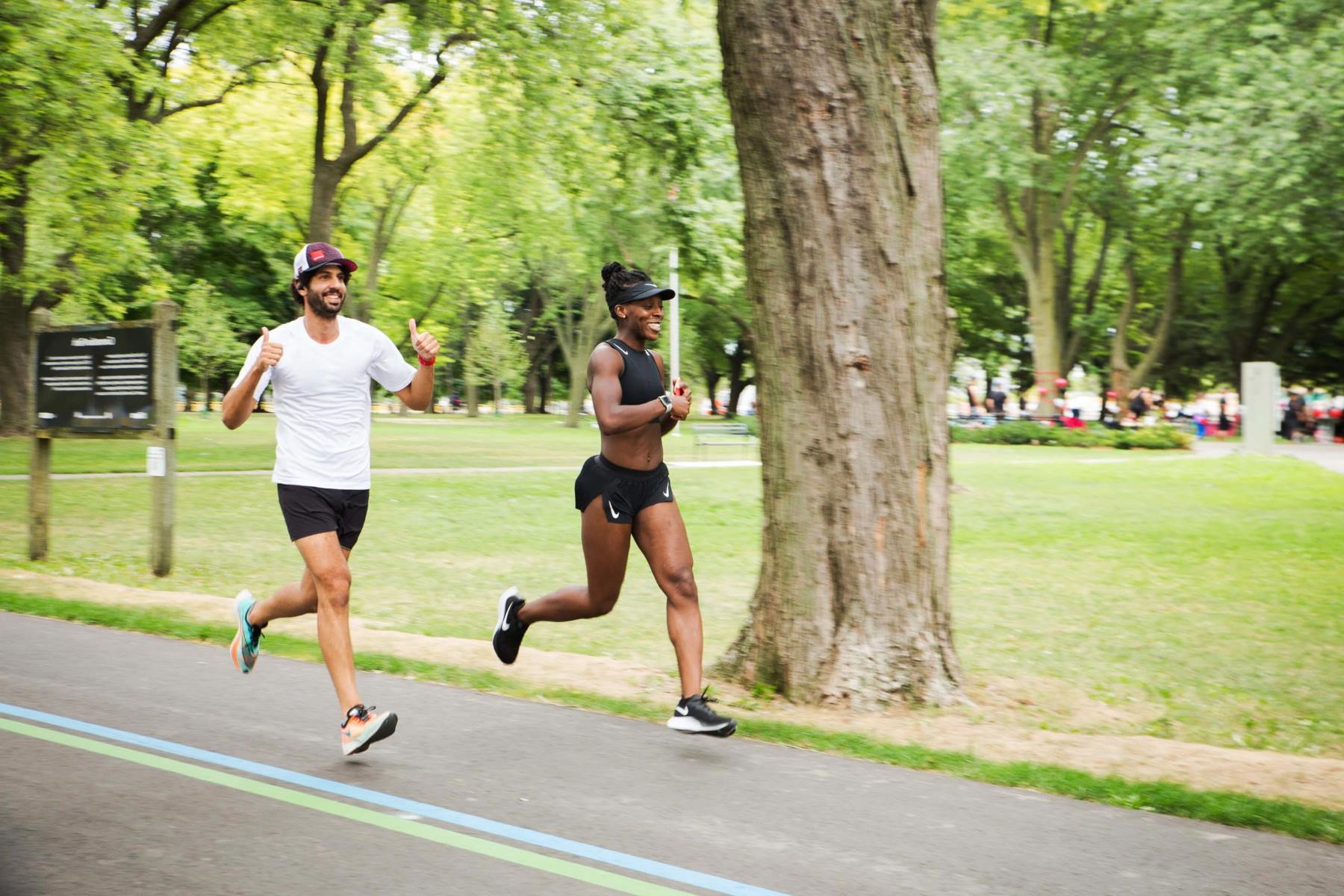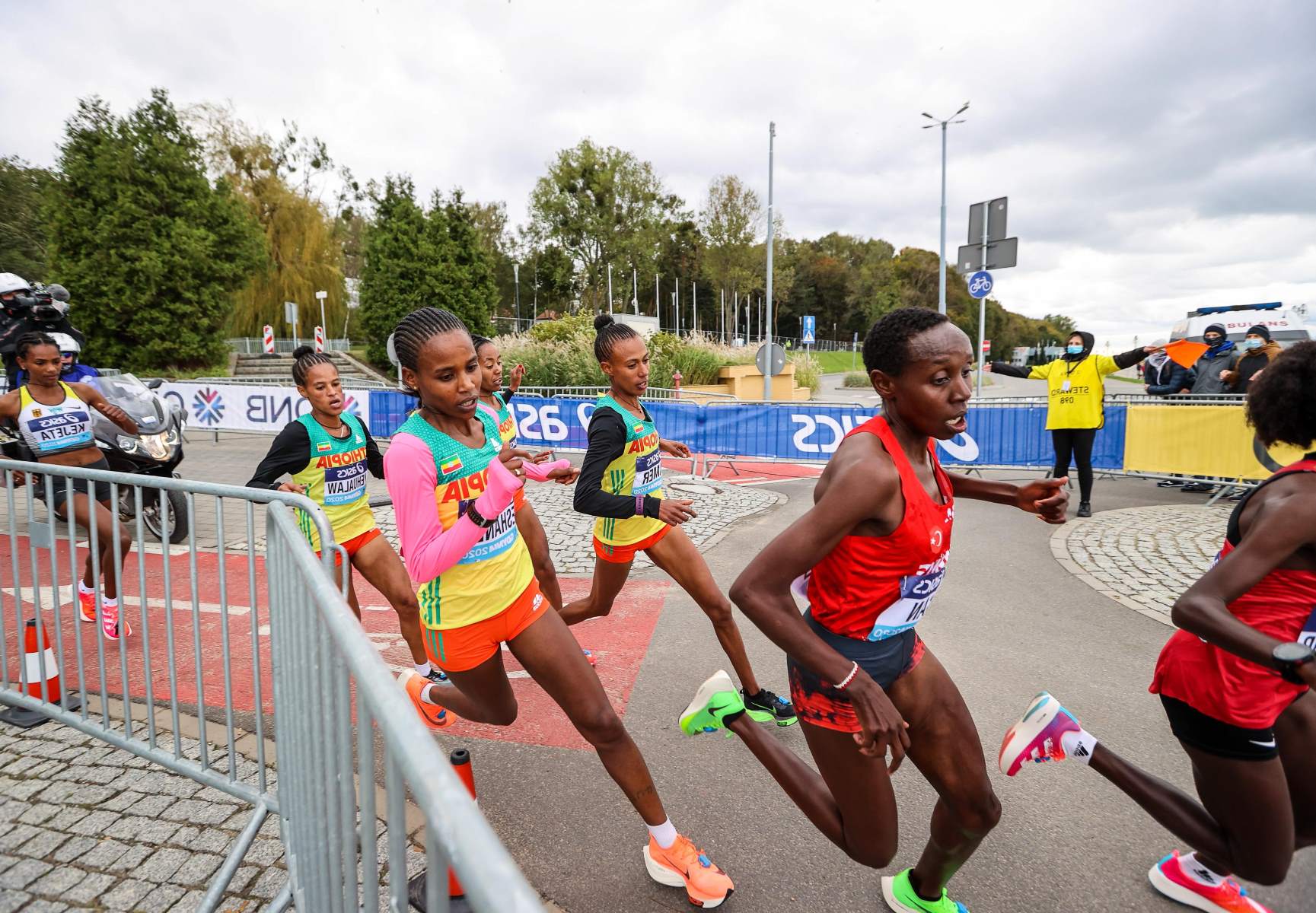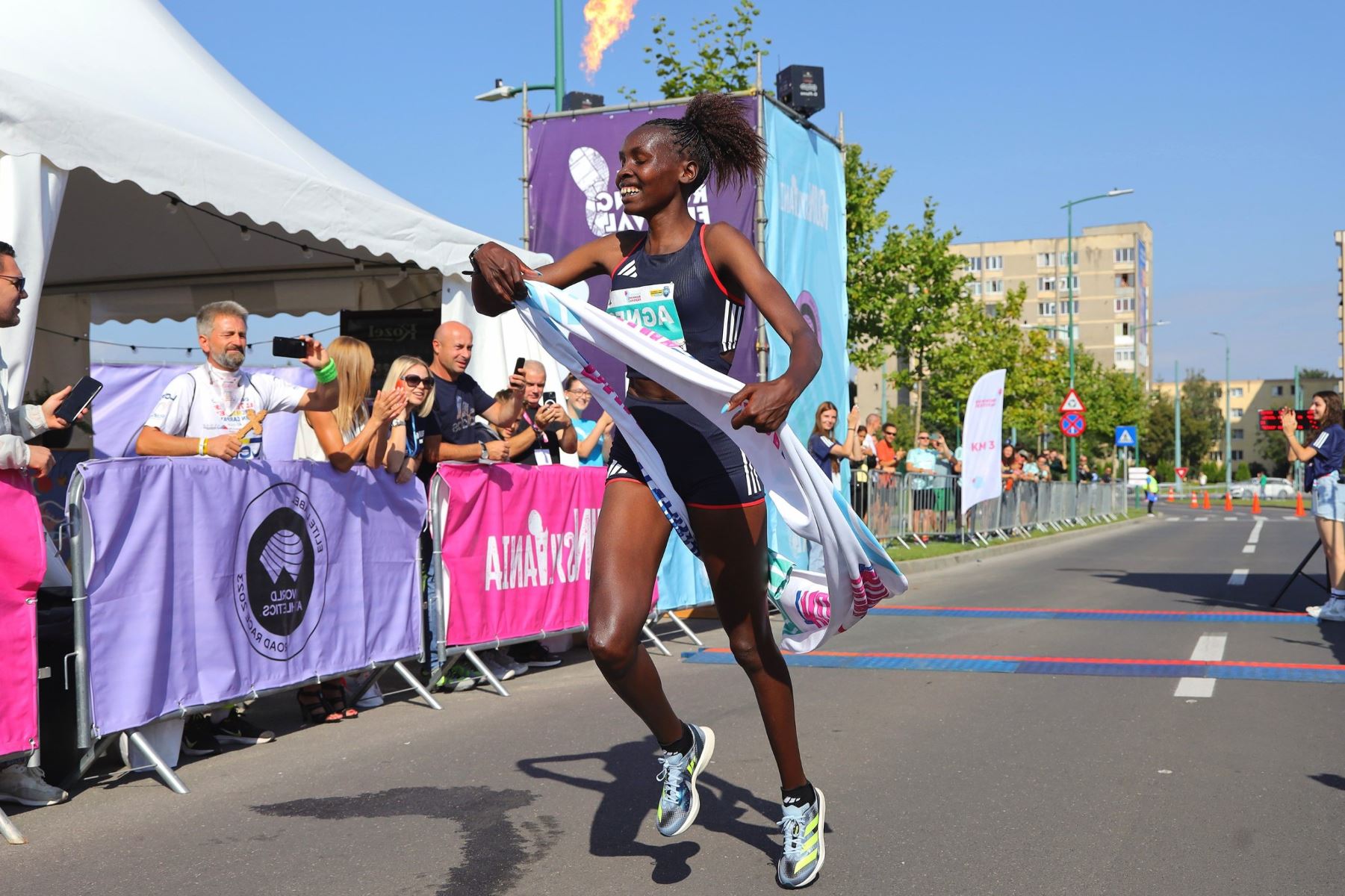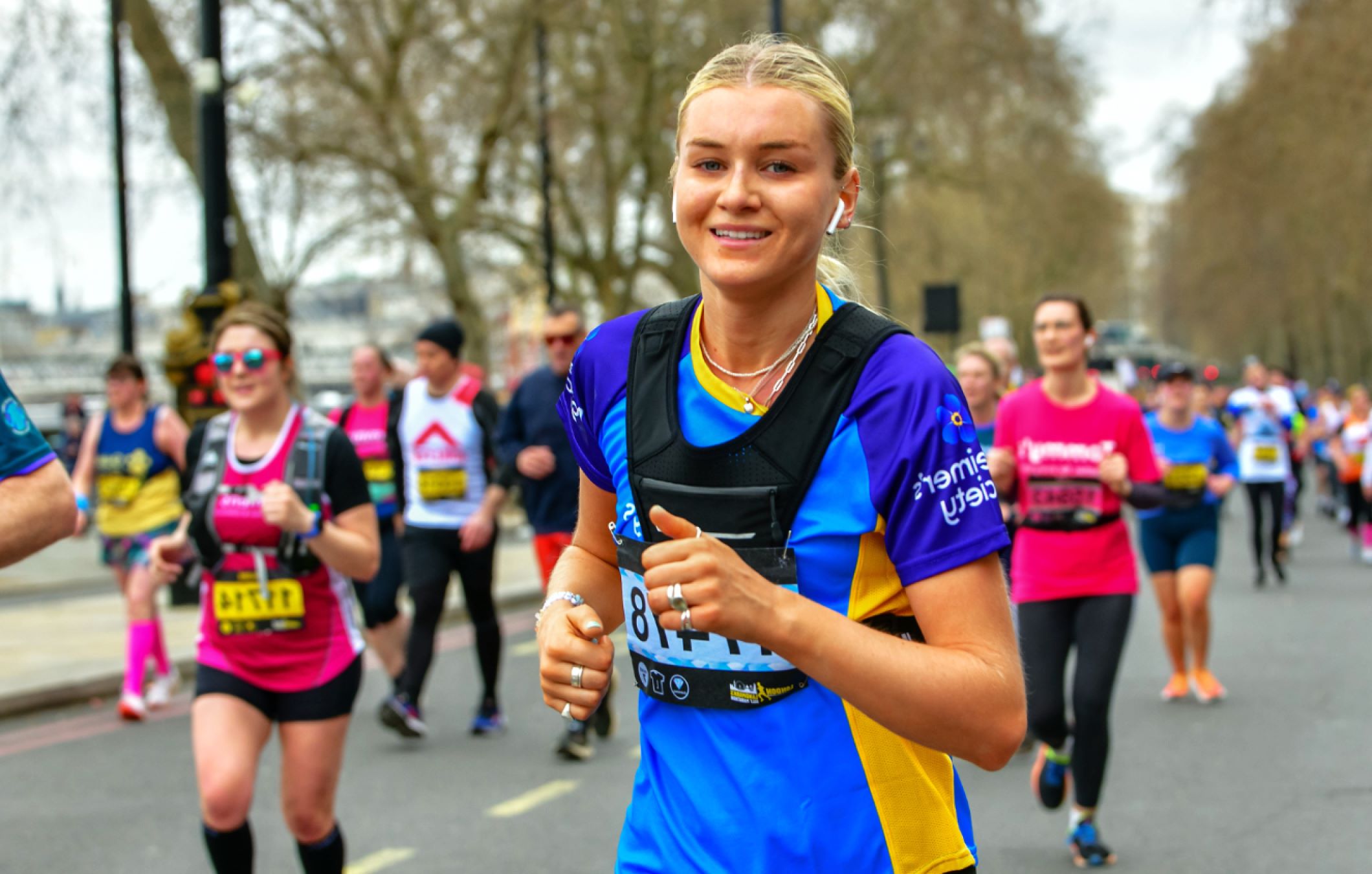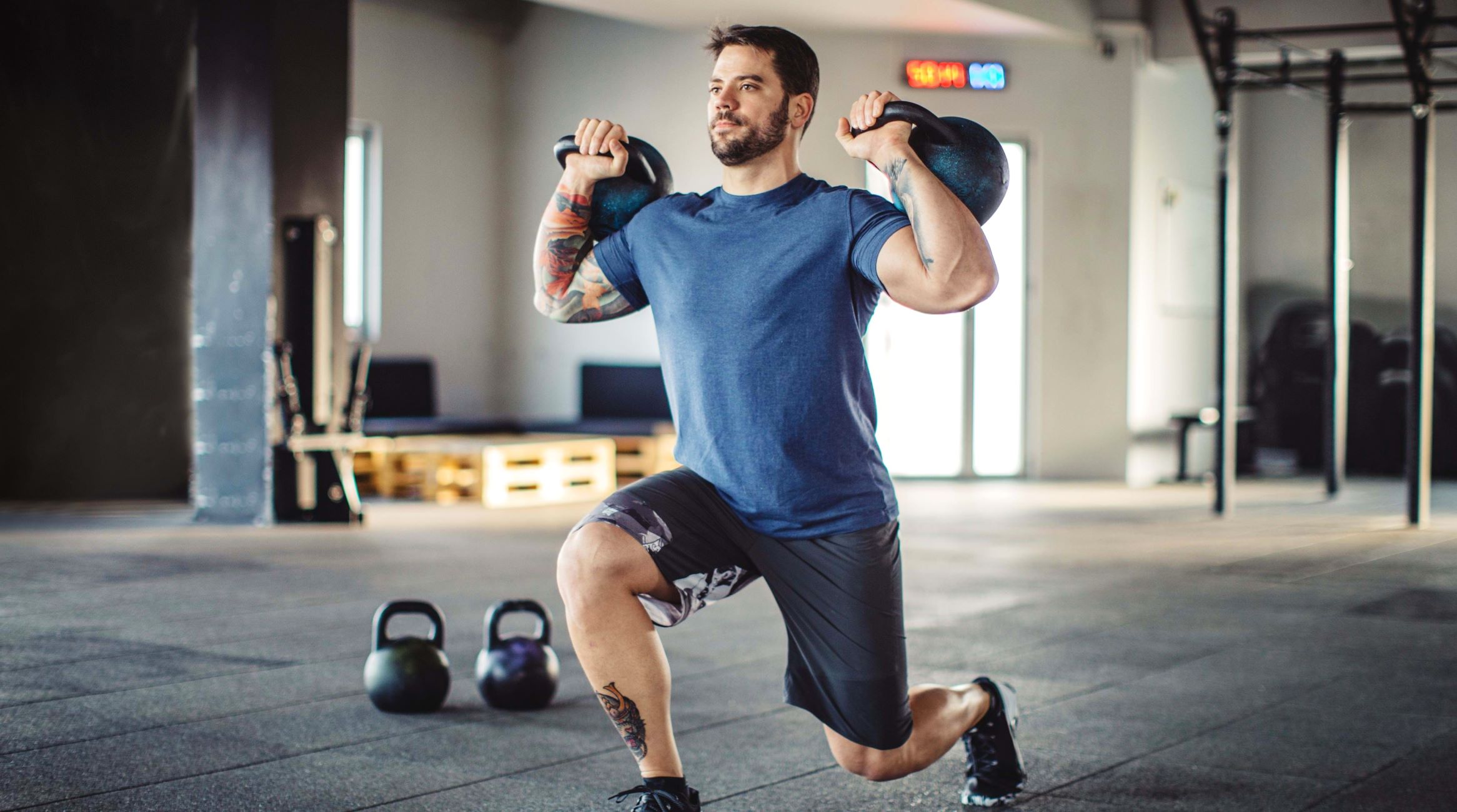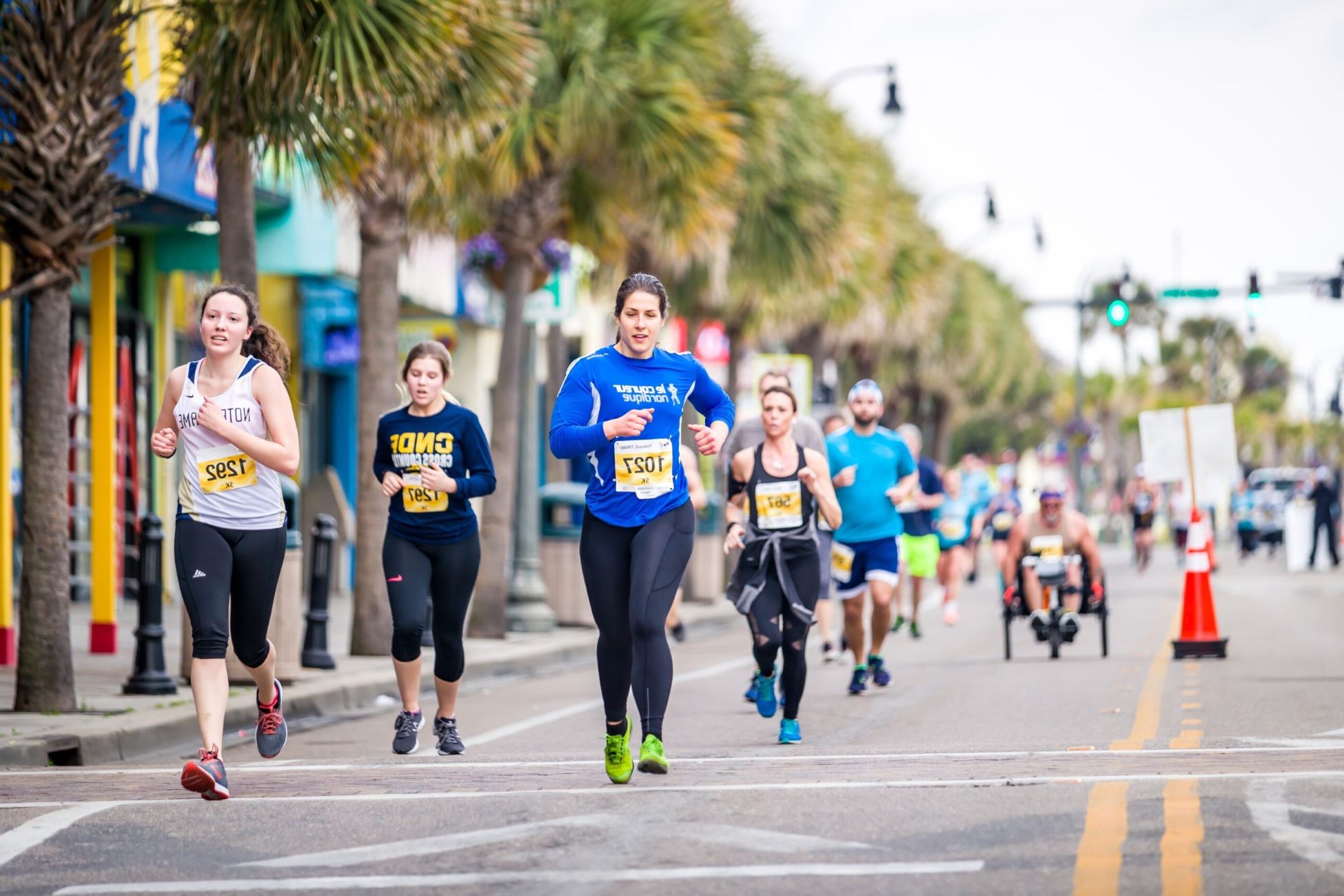Home>Training & Techniques>Training Plans>Top 10 Training Sessions For 5K And 10K Races
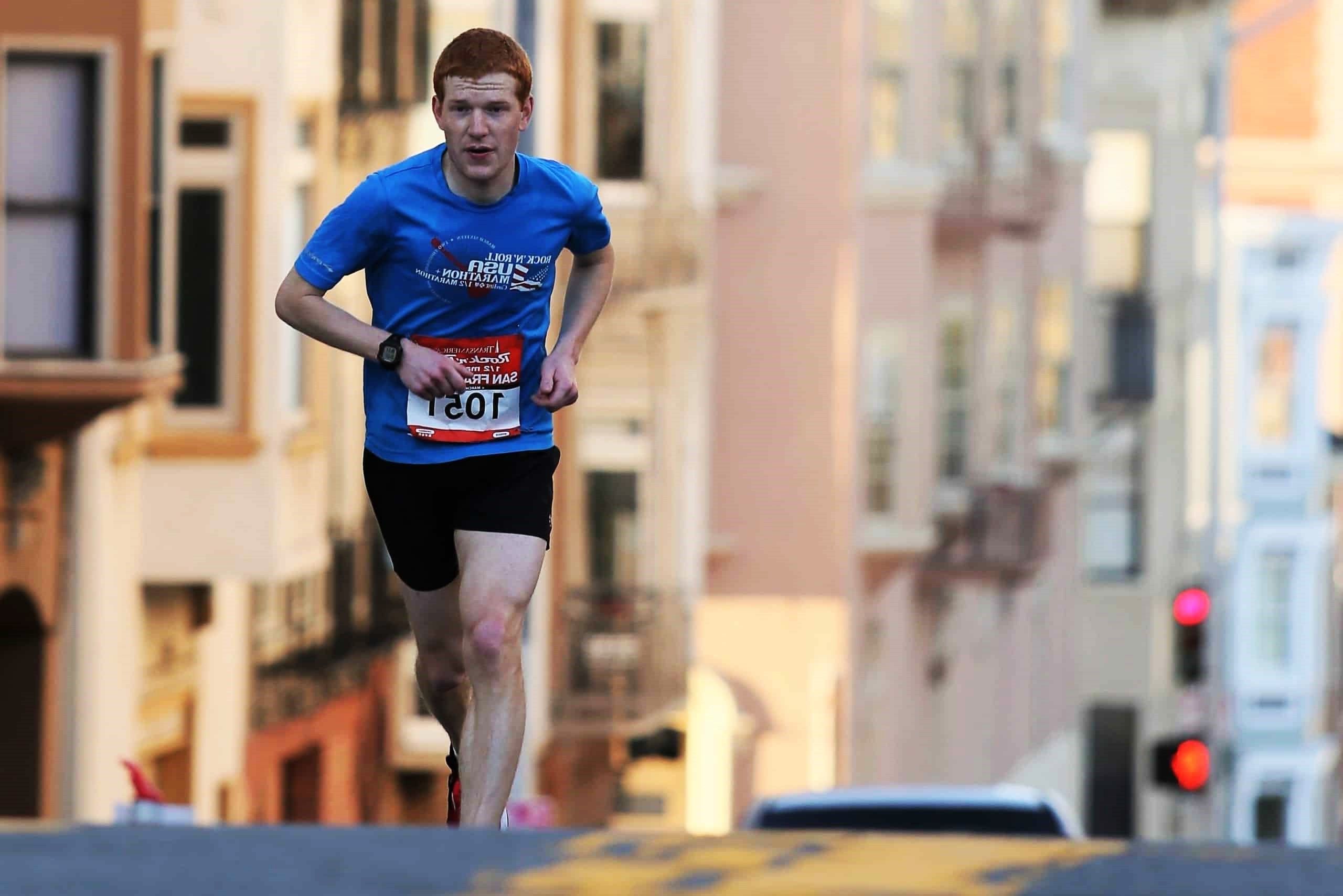

Training Plans
Top 10 Training Sessions For 5K And 10K Races
Published: March 3, 2024
Discover the top 10 training sessions for 5K and 10K races with our expertly crafted training plans, designed to help you achieve your running goals. Whether you're a beginner or seasoned runner, our comprehensive programs will guide you every step of the way. Unlock your full potential and conquer your next race with our proven training strategies.
(Many of the links in this article redirect to a specific reviewed product. Your purchase of these products through affiliate links helps to generate commission for Therunningadvisor.com, at no extra cost. Learn more)
Table of Contents
Introduction
Training for a 5K or 10K race requires dedication, perseverance, and a well-structured plan. Whether you're a seasoned runner or a novice, having a comprehensive training program is essential to improve your endurance, speed, and overall performance. The journey to the finish line involves a combination of various training sessions tailored to enhance different aspects of your running ability.
In this article, we will explore the top 10 training sessions designed to prepare you for 5K and 10K races. From interval training to long distance runs, each session plays a crucial role in building your strength, stamina, and mental resilience. By incorporating these training sessions into your regimen, you can elevate your running prowess and conquer the challenges that come with these popular race distances.
Let's delve into the specifics of each training session, uncovering the strategies and techniques that will propel you towards your race day goals. Whether you're aiming for a personal best or simply striving to cross the finish line with a sense of accomplishment, these training sessions will serve as your roadmap to success. So, lace up your running shoes, embrace the journey, and let's embark on this exhilarating training adventure together.
5K Race Training Sessions
Training for a 5K race demands a strategic approach that focuses on building speed, endurance, and mental fortitude. Whether you're a beginner aiming to complete your first 5K or a seasoned runner striving for a new personal record, incorporating diverse training sessions into your regimen is crucial for success. Here are the top training sessions tailored specifically for 5K race preparation:
-
Easy Runs: These are steady-paced runs that form the foundation of your training. They help improve cardiovascular fitness and build endurance, essential for covering the 5K distance. Aim to incorporate easy runs into your weekly schedule, gradually increasing the duration as your training progresses.
-
Interval Training: Intervals involve alternating between high-intensity bursts of speed and periods of active recovery. This session enhances your anaerobic capacity and overall speed, contributing to improved race performance. For a 5K, shorter intervals such as 400 meters or 800 meters are effective in boosting your pace.
-
Fartlek Runs: Fartlek, meaning "speed play" in Swedish, involves varying your pace throughout the run. This unstructured form of speed training can be adapted to mimic the unpredictable nature of a 5K race, where pace fluctuations are common. Incorporating fartlek runs into your training helps improve both speed and endurance.
-
Tempo Runs: Tempo runs are performed at a comfortably hard pace, typically sustained for a continuous period. This session enhances your lactate threshold, allowing you to sustain a faster pace for a longer duration. Including tempo runs in your training regimen can significantly improve your race performance.
-
Hill Repeats: Running uphill challenges your leg muscles and cardiovascular system, contributing to enhanced strength and power. Hill repeats involve running uphill at a hard effort, followed by a recovery jog downhill. This session not only builds physical strength but also mental resilience, preparing you to tackle inclines during the race.
By incorporating these diverse training sessions into your 5K race preparation, you can effectively enhance your speed, endurance, and overall race performance. Each session plays a unique role in developing the physical and mental attributes required to conquer the 5K distance. As you progress through your training, remember to listen to your body, stay consistent, and embrace the rewarding journey towards your 5K race day.
10K Race Training Sessions
Training for a 10K race demands a holistic approach that encompasses endurance, speed, and mental resilience. Whether you're aiming to conquer your first 10K or striving to set a new personal best, a well-structured training plan is essential for success. Here are the top training sessions tailored specifically for 10K race preparation:
-
Long Runs: Long runs form the cornerstone of 10K race training. These sessions are designed to build endurance and mental toughness, preparing you to cover the 10K distance comfortably. Gradually increasing the distance of your long runs over the course of your training allows your body to adapt to the demands of the race.
-
Interval Training: Intervals play a pivotal role in improving your speed and cardiovascular fitness. For a 10K race, incorporating longer intervals, such as 800 meters to 1600 meters, at a challenging pace followed by a recovery period, helps enhance your anaerobic capacity and overall race pace.
-
Tempo Runs: Tempo runs are crucial for improving your lactate threshold and sustaining a comfortably hard pace. These sessions simulate the race conditions, enabling you to maintain a challenging yet sustainable speed throughout the 10K distance.
-
Fartlek Runs: Fartlek training, characterized by varying your pace throughout the run, is beneficial for 10K race preparation. This unstructured form of speed play helps improve both speed and endurance, preparing you to handle the varied pace demands of the race.
-
Hill Training: Incorporating hill repeats into your training regimen is essential for building lower body strength and mental resilience. Tackling uphill segments during training prepares you to conquer any inclines encountered during the 10K race, giving you a competitive edge.
-
Speed Workouts: Dedicated speed workouts, such as strides and short sprints, help improve your running economy and leg turnover. These sessions contribute to enhancing your overall speed and efficiency, crucial for achieving your desired race pace.
By integrating these diverse training sessions into your 10K race preparation, you can effectively enhance your endurance, speed, and mental fortitude. Each session plays a unique role in developing the physical and mental attributes required to excel in the 10K distance. As you progress through your training, stay committed, maintain consistency, and embrace the journey towards your 10K race day.
Interval Training
Interval training is a fundamental component of race preparation, renowned for its ability to significantly enhance speed, endurance, and overall race performance. This structured form of training involves alternating between periods of high-intensity effort and active recovery, effectively challenging both the cardiovascular and muscular systems. For runners gearing up for a 5K or 10K race, integrating interval training into their regimen is paramount for achieving peak performance on race day.
In the context of a 5K race, interval training typically involves shorter, more intense intervals, such as 400 meters or 800 meters, performed at a pace significantly faster than your target race speed. These bursts of speed are interspersed with periods of active recovery, allowing your body to partially replenish its energy stores and prepare for the next interval. This repetitive cycle of exertion and recovery serves to elevate your anaerobic capacity, enabling you to sustain a faster pace and cover the 5K distance more efficiently.
For runners preparing for a 10K race, interval training often incorporates longer intervals, ranging from 800 meters to 1600 meters, at a challenging pace. These sustained efforts are followed by brief recovery periods, during which runners can catch their breath and prepare for the next interval. By engaging in this form of training, runners can effectively improve their anaerobic threshold, enabling them to maintain a strong and consistent pace throughout the 10K distance.
The benefits of interval training extend beyond physical adaptations, encompassing mental fortitude and race strategy. Enduring the discomfort of pushing through intense intervals cultivates mental resilience, preparing runners to tackle the inevitable challenges encountered during a race. Moreover, interval training provides an opportunity to practice pacing strategies, honing the ability to gauge and maintain an optimal race pace.
Incorporating interval training into your race preparation demands a balanced approach, considering factors such as interval duration, intensity, and recovery periods. It is essential to tailor the intervals to align with your current fitness level and progressively increase the challenge as your training advances. Additionally, adequate warm-up and cool-down routines should accompany interval sessions to minimize the risk of injury and optimize performance gains.
By embracing interval training as a cornerstone of your race preparation, you can harness its transformative power to elevate your speed, endurance, and mental resilience. Whether you're striving for a new personal best or aiming to conquer your first race, the structured intensity of interval training will undoubtedly propel you closer to your race day aspirations.
Hill Training
Hill training stands as a pivotal component in the arsenal of a runner preparing for a 5K or 10K race. The strategic incorporation of hill workouts into a training regimen yields a myriad of physical and mental benefits, equipping runners with the strength and resilience necessary to conquer the challenges presented by varying terrains and inclines during a race.
The physiological adaptations induced by hill training are multifaceted. Running uphill demands a higher degree of muscular effort, particularly engaging the quadriceps, hamstrings, and glutes. This intensified muscle recruitment contributes to enhanced lower body strength and power, essential for surmounting inclines with efficiency and confidence. Furthermore, the cardiovascular system undergoes significant stimulation during hill workouts, as the heart must work harder to deliver oxygen-rich blood to the working muscles. Over time, this leads to improved cardiovascular endurance, enabling runners to sustain their effort levels across undulating race courses.
Beyond the physical realm, hill training cultivates mental fortitude and resilience. Confronting the challenge of running uphill instills a sense of determination and grit, fostering the mental toughness required to persevere through moments of discomfort and fatigue during a race. Moreover, the strategic approach to pacing and effort management during hill workouts hones a runner's ability to adapt to varying terrain, empowering them to tackle inclines with strategic prowess and confidence.
Incorporating hill repeats into a training regimen involves identifying suitable inclines that allow for a challenging yet sustainable effort. The structure of a typical hill workout may entail running uphill at a hard effort, followed by a recovery jog downhill to facilitate partial recuperation before the next repetition. This cyclical pattern of exertion and recovery not only builds physical strength and cardiovascular endurance but also instills a sense of mental resilience, preparing runners to confront the demands of race day with unwavering determination.
As runners progress through their training, the frequency and intensity of hill workouts can be gradually adjusted to align with their evolving fitness levels and race goals. Whether navigating the undulating terrain of a 5K race or the longer, more demanding course of a 10K race, the benefits derived from consistent hill training are invaluable, positioning runners to approach race day with confidence, strength, and a competitive edge.
In essence, hill training serves as a transformative tool, shaping runners into resilient, powerful athletes capable of conquering the varied landscapes and challenges presented by 5K and 10K races. Embracing the rigors of hill workouts not only enhances physical capabilities but also fortifies the mental tenacity required to triumph over the demanding nature of race day.
Long Distance Runs
Long distance runs form the cornerstone of a runner's training regimen, playing a pivotal role in preparing for 5K and 10K races. These extended sessions, typically ranging from 6 to 12 miles for 10K race preparation and 3 to 6 miles for 5K race training, are instrumental in building endurance, mental resilience, and race-specific conditioning.
The physiological adaptations induced by long distance runs are profound. Endurance is a key component of successful race performance, and long runs serve as the primary tool for developing this crucial attribute. As runners gradually increase the duration of their long runs, their cardiovascular system undergoes significant adaptation, enhancing the heart's efficiency in pumping oxygenated blood to working muscles. This results in improved aerobic capacity, enabling runners to sustain their effort over the duration of the race.
Moreover, long distance runs provide an opportunity for runners to acclimate to the physical and mental demands of covering the race distance. By simulating race conditions during these extended sessions, runners can fine-tune their pacing strategies, nutrition and hydration plans, and mental fortitude. This race-specific conditioning is invaluable, as it equips runners with the confidence and resilience necessary to tackle the challenges encountered on race day.
In addition to the physical and mental benefits, long distance runs also facilitate the development of running economy and efficiency. As runners accumulate miles during these extended sessions, their neuromuscular system adapts to the repetitive motion of running, optimizing stride mechanics and energy utilization. This, in turn, contributes to improved running economy, allowing runners to cover the race distance with greater efficiency and reduced energy expenditure.
Integrating long distance runs into a training regimen demands a progressive and strategic approach. Runners should gradually increase the duration of their long runs, allowing for adequate recovery between sessions to minimize the risk of overtraining and injury. Additionally, incorporating variations in terrain, such as hilly routes, can further enhance the physiological adaptations and mental resilience gained from long distance runs.
Ultimately, long distance runs serve as a cornerstone of race preparation, fostering the physical, mental, and race-specific attributes required for success in 5K and 10K races. By embracing the rigors of these extended sessions, runners can fortify their endurance, resilience, and strategic prowess, positioning themselves for a triumphant performance on race day.
Speed Workouts
Speed workouts are a vital component of a runner's training arsenal, serving as a catalyst for enhancing running economy, leg turnover, and overall race pace. These targeted sessions are designed to elevate a runner's speed and efficiency, ultimately contributing to improved performance in 5K and 10K races.
One of the key benefits of speed workouts lies in their ability to enhance running economy. By engaging in structured speed sessions, runners can refine their biomechanics and neuromuscular coordination, optimizing their stride mechanics and energy utilization. This, in turn, leads to improved running economy, allowing runners to cover the race distance with greater efficiency and reduced energy expenditure. As a result, runners can sustain a faster pace for longer durations, a critical advantage in both 5K and 10K races.
Moreover, speed workouts play a pivotal role in developing leg turnover, also known as cadence. By incorporating dedicated speed sessions, such as strides and short sprints, runners can enhance their leg turnover rate, enabling them to maintain a swift and consistent pace. This heightened cadence not only contributes to improved speed but also cultivates a more fluid and efficient running style, essential for achieving optimal race performance.
In the context of 5K and 10K races, speed workouts are instrumental in honing a runner's ability to sustain a challenging pace. By engaging in targeted speed sessions, runners can acclimate their bodies to the demands of race pace, enabling them to maintain a strong and consistent speed throughout the race. This race-specific conditioning is invaluable, as it instills the confidence and resilience necessary to tackle the varied challenges presented by these popular race distances.
Integrating speed workouts into a training regimen demands a balanced approach, considering factors such as session duration, intensity, and recovery periods. It is essential to tailor the speed sessions to align with a runner's current fitness level and progressively increase the challenge as training advances. Additionally, incorporating adequate warm-up and cool-down routines is crucial to minimize the risk of injury and optimize performance gains.
In essence, speed workouts serve as a transformative tool, empowering runners to elevate their speed, efficiency, and race-specific conditioning. By embracing the rigors of these targeted sessions, runners can fortify their ability to sustain a challenging pace, positioning themselves for a triumphant performance in 5K and 10K races.
Cross Training
Cross training, often referred to as cross-training, is a valuable and versatile component of a comprehensive race preparation regimen for 5K and 10K events. This training approach involves engaging in alternative forms of exercise and physical activities beyond running, providing a myriad of benefits that complement and enhance a runner's overall performance and well-being.
One of the primary advantages of cross training is its ability to mitigate the risk of overuse injuries. Running places repetitive stress on specific muscle groups and joints, increasing the likelihood of overuse injuries such as shin splints, IT band syndrome, and stress fractures. By incorporating cross training activities such as swimming, cycling, or strength training, runners can reduce the impact and strain on their bodies while still maintaining and improving their cardiovascular fitness and muscular strength.
Furthermore, cross training offers a platform for addressing muscular imbalances and enhancing overall strength and flexibility. Engaging in activities such as yoga, Pilates, or resistance training can target muscle groups that may be underutilized during running, promoting muscular symmetry and reducing the risk of injury. Additionally, the varied movements and resistance encountered in cross training activities contribute to improved overall strength and flexibility, which are essential for running efficiency and injury prevention.
From a mental perspective, cross training provides a refreshing break from the repetitive nature of running, preventing burnout and enhancing motivation. The diversity of cross training activities introduces novelty and excitement into a training regimen, fostering a positive mindset and renewed enthusiasm for physical fitness. This mental rejuvenation can have a profound impact on a runner's overall well-being and commitment to their training program.
Incorporating cross training into a race preparation plan demands a thoughtful and balanced approach. It is essential to select activities that complement running while minimizing the risk of overexertion or conflicting with primary training objectives. Additionally, the frequency and intensity of cross training sessions should align with a runner's overall training load and recovery needs, ensuring a harmonious integration into the broader training regimen.
In essence, cross training serves as a valuable adjunct to running, offering a spectrum of benefits that encompass injury prevention, strength and flexibility enhancement, and mental rejuvenation. By embracing the diversity and versatility of cross training, runners can fortify their physical and mental resilience, positioning themselves for a successful and fulfilling experience in 5K and 10K races.
Rest and Recovery
Rest and recovery are integral components of a runner's training journey, playing a pivotal role in optimizing performance, preventing injuries, and promoting overall well-being. Amid the rigors of race preparation for 5K and 10K events, prioritizing adequate rest and strategic recovery practices is essential for sustaining progress and achieving peak performance on race day.
Rest serves as the foundation upon which training adaptations occur. It is during periods of rest that the body undergoes repair and regeneration, allowing for the consolidation of training-induced physiological changes. Adequate sleep, characterized by both duration and quality, is paramount for facilitating this process. During sleep, the body releases growth hormone, which aids in tissue repair, muscle growth, and the restoration of energy stores. Furthermore, sleep plays a crucial role in cognitive function, mood regulation, and immune system support, all of which are vital for a runner's overall well-being and training readiness.
Strategic recovery practices, such as active recovery sessions, foam rolling, and stretching, are instrumental in promoting muscular repair and flexibility. Active recovery sessions, which involve low-intensity activities such as walking or gentle cycling, facilitate blood flow to fatigued muscles, aiding in the removal of metabolic by-products and the delivery of essential nutrients for repair. Additionally, incorporating foam rolling and targeted stretching routines can alleviate muscle tension, enhance range of motion, and mitigate the risk of overuse injuries.
In the context of race preparation, rest and recovery periods are strategically integrated into a training regimen to optimize adaptation and minimize the risk of overtraining. Periodization, a structured approach to training that incorporates planned rest and recovery phases, allows runners to balance training stress with adequate recovery, promoting long-term progress and injury prevention. By strategically scheduling lighter training days and designated rest days, runners can ensure that their bodies have the opportunity to adapt and rejuvenate, ultimately enhancing their readiness for the demands of race day.
Moreover, embracing a holistic approach to rest and recovery involves attending to mental well-being. Engaging in activities that promote relaxation and stress reduction, such as meditation, mindfulness practices, or leisurely hobbies, can foster mental rejuvenation and resilience. This, in turn, contributes to a positive mindset, sustained motivation, and an overall sense of balance and well-being throughout the training process.
In essence, rest and recovery are indispensable pillars of a runner's training journey, serving as the catalysts for adaptation, injury prevention, and holistic well-being. By embracing the restorative power of adequate sleep, strategic recovery practices, and mental rejuvenation, runners can fortify their bodies and minds, positioning themselves for a successful and fulfilling experience in 5K and 10K races.
Conclusion
In the exhilarating pursuit of preparing for 5K and 10K races, the journey is as significant as the destination. The amalgamation of diverse training sessions, from interval training to long distance runs, forms the bedrock of a runner's preparation, shaping their physical prowess, mental resilience, and strategic acumen. Each training session serves as a building block, meticulously crafting the attributes required to conquer the challenges and embrace the triumphs of race day.
The strategic integration of training sessions tailored for 5K and 10K race preparation reflects a holistic approach to athletic development. Easy runs lay the foundation for endurance, while interval training and tempo runs elevate speed and anaerobic capacity. Fartlek runs infuse spontaneity and adaptability, mirroring the dynamic nature of race conditions. Hill repeats fortify lower body strength and mental fortitude, preparing runners to conquer inclines with unwavering determination. Long distance runs foster endurance, race-specific conditioning, and running economy, essential for covering the race distance with efficiency. Speed workouts refine running economy, leg turnover, and race-specific conditioning, empowering runners to sustain a challenging pace. Cross training offers a spectrum of benefits, encompassing injury prevention, strength and flexibility enhancement, and mental rejuvenation. Rest and recovery serve as the cornerstone of adaptation, injury prevention, and holistic well-being, nurturing the body and mind for sustained progress.
As runners progress through their training, the culmination of these diverse sessions cultivates a multifaceted athletic prowess, positioning them for a triumphant performance on race day. The physical adaptations, mental fortitude, and race-specific conditioning garnered from these training sessions coalesce to form a formidable arsenal, equipping runners to navigate the demands of 5K and 10K races with confidence and resilience.
The journey towards race day is not solely defined by the physical exertion and strategic training. It is a narrative of dedication, perseverance, and unwavering commitment, interwoven with moments of triumph, setbacks, and unwavering determination. Each training session is a chapter in this narrative, contributing to the evolution of the runner, both as an athlete and an individual.
As the finish line beckons, the amalgamation of training sessions serves as a testament to the runner's unwavering dedication and relentless pursuit of excellence. The strides taken during interval training, the ascent of inclines during hill repeats, the rhythmic cadence of long distance runs, and the exhilarating speed of tempo runs all converge to propel the runner towards their race day aspirations.
In essence, the culmination of these training sessions transcends the physical realm, encapsulating the spirit of resilience, fortitude, and unwavering determination. It is a testament to the indomitable human spirit, ceaselessly striving for progress, embracing challenges, and triumphing over adversity. As the runner stands poised at the starting line, the echoes of their training sessions reverberate within, igniting a fire of determination and resilience that will carry them through the exhilarating journey of 5K and 10K races.


